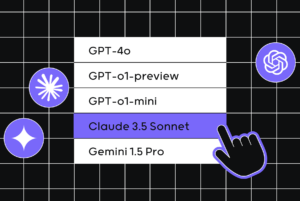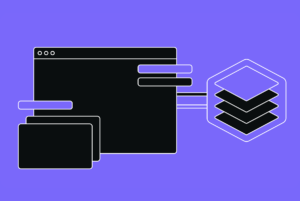Why are Non-Functional Requirements Important?


Introduction
Non-functional requirements (NFRs) are a critical aspect of software development that often take a back seat to their functional counterparts. In this article, we’ll delve into the significance of non-functional requirements, explore the distinctions between functional and non-functional requirements, and provide insights into their role in agile development. Let’s understand why paying attention to non-functional requirements is indispensable for delivering successful software solutions.

Functional vs. Non-Functional Requirements: Unveiling the Differences
Functional Requirements Recap
Functional requirements serve as the foundation for defining the functionalities and behaviors that a software system must possess to meet the needs and expectations of its users. These requirements delve into the specific actions the software should perform, outlining the features and capabilities it must exhibit during its operation. Examples of functional requirements include user authentication, data processing, and report generation.

Non-Functional Requirements Defined
Non-functional requirements, on the other hand, focus on how the system performs its functions rather than what functions it performs. They address aspects like performance, security, usability, and maintainability. These requirements are often overlooked but play a pivotal role in determining the overall success of a software project.

Understanding the fundamental distinctions between functional and non-functional requirements is crucial for crafting a comprehensive software development framework. The table below provides a concise overview of the key differences between these two types of requirements.
| Aspect | Functional Requirements | Non-Functional Requirements |
| Focus | What the system should do. | How the system performs its functions. |
| Orientation | Task-oriented. Specifies features, capabilities, and behaviors. | Quality-oriented. Addresses aspects like performance and security. |
| Examples | User authentication, data processing, report generation. | Performance, security, usability, maintainability. |
| Centrality to User | User-centric. Directly observable and tangible features. | Quality attributes that may not be directly observable by users. |
| Purpose | Shapes the core features of the software, fulfilling user needs. | Influences the efficiency, security, and overall quality of the system. |
| Measurability | Measured by the successful execution of specific functionalities. | Measured by criteria such as response times, security controls, etc. |
| Dynamic Nature | Easier to change and iterate upon during development. | May require ongoing refinement and adjustments throughout the project. |
| Examples of Requirements | – User authentication process should require a valid username and password. – The system should process data and update the database in real time. – The system should generate detailed reports based on user-defined parameters. |
– The system should respond to user actions within 2 seconds. – The software should be accessible to users with disabilities. – The codebase should adhere to coding standards for readability. – The system should be easily upgradable to accommodate future changes. |
Scalability: A Key Non-Functional Requirement
Scalability is a crucial aspect of non-functional requirements that deserves special attention. It refers to the system’s ability to handle increasing work, data, or users without compromising performance. Neglecting scalability can lead to bottlenecks and performance issues as the software grows.
Importance of Scalability in Software Development
- Business Growth: As your user base expands, the software must scale seamlessly to accommodate increased demand.
- User Experience: Scalability ensures a positive user experience by preventing slowdowns or downtime during peak usage.
- Cost-Effectiveness: Planning for scalability from the outset can save costs in the long run, as retrofitting scalability into an existing system can be challenging.
[blog-subscribe]
The Non-Functional Requirements Checklist
A comprehensive non-functional requirements checklist is indispensable for successful software development.

Let’s delve into the details of each element in the non-functional requirements checklist:
Performance
- Response Time:
- This refers to the time it takes for the system to respond to a user’s action or request. Defining acceptable response times for critical functions to ensure a smooth and efficient user experience is crucial.
- Defines user expectations and contributes to user satisfaction by ensuring the system is responsive and performs tasks promptly.
- Throughput:
- Throughput specifies the number of transactions or operations the system should be able to handle within a given timeframe. It is an indicator of the system’s processing capacity.
- Helps in understanding and planning for the system’s capacity to handle a certain volume of transactions, preventing performance degradation under heavy loads.
Security
- Authentication:
- Authentication mechanisms involve verifying the identity of users or systems accessing the software. Access controls determine what actions or data each authenticated entity is allowed to access.
- Protects the system from unauthorized access, ensuring only legitimate users can interact with sensitive information.
- Data Encryption:
- Involves encoding sensitive data to prevent unauthorized access or data breaches. Encryption ensures that even if data is intercepted, it remains unreadable without the proper decryption key.
- Safeguards sensitive information, such as user credentials or financial data, from being compromised.
Usability
- User Interface Responsiveness:
- This focuses on the software’s ability to respond promptly to user inputs, providing a smooth and interactive user interface.
- Enhances user satisfaction by creating a responsive and engaging user experience.
- Accessibility:
- Addresses the needs of users with disabilities, ensuring the software is designed to accommodate various accessibility requirements.
- Promotes inclusivity by making the software accessible to users with diverse needs and abilities.

Reliability
- Availability:
- Specifies the acceptable downtime amount, indicating the time the system should be operational.
- Ensures that the system is consistently available, minimizing disruptions to users and business operations.
- Fault Tolerance:
- Defines how the system should handle unexpected failures or errors, ensuring it can continue functioning or recover gracefully.
- Enhances the system’s resilience by minimizing the impact of faults, contributing to overall reliability.
Maintainability
- Code Maintainability:
- Involves enforcing coding standards and documentation practices to make the codebase understandable and modifiable.
- Facilitates easier maintenance, debugging, and future development, reducing the risk of errors and improving the longevity of the software.
- Upgradability:
-
- Focuses on planning for future updates and improvements, ensuring the software can be easily upgraded without major disruptions.
- Supports the adaptability of the software to changing requirements, technologies, and business needs, promoting its long-term viability.
Non-Functional Requirements in Agile Development: Nurturing Adaptability and Collaboration
Agile methodologies emphasize flexibility, collaboration, and responsiveness to change, fostering a dynamic and iterative approach to software development. Despite the inherent advantages of agility, seamlessly integrating non-functional requirements into an agile framework presents distinct challenges. This integration demands a shift in mindset and a steadfast commitment to continual refinement throughout the development process.

Mindset Shift
- Agile development traditionally focuses on delivering functional features iteratively. Incorporating non-functional requirements requires a shift in mindset, emphasizing that aspects like performance, security, and usability are integral components of a successful product.
- Recognizing the importance of non-functional requirements encourages teams to consider broader aspects beyond feature delivery, contributing to the overall quality and success of the software.
Collaborative Approach
- Agile thrives on collaboration among cross-functional teams, including developers, testers, and stakeholders. Integrating non-functional requirements necessitates effective communication and cooperation among these diverse team members.
- Collaborative efforts ensure that non-functional aspects are understood and prioritized collectively, aligning the team’s efforts with the project’s broader goals.
Dynamic Refinement
- Agile methodologies inherently embrace change throughout the development lifecycle. Non-functional requirements, being dynamic and subject to evolution, demand continual refinement and adjustment as the project progresses.
- Regularly revisiting and refining non-functional requirements ensures that the evolving needs of the project and end-users are addressed, promoting adaptability and responsiveness.
Prioritization Techniques
- Given the time constraints of agile sprints, prioritizing non-functional requirements becomes crucial. Techniques like MoSCoW (Must-haves, Should-haves, Could-haves, Won’t-haves) help categorize and prioritize non-functional aspects within the iterative development cycles.
- Effective prioritization ensures that critical non-functional requirements are addressed early in the development process, mitigating the risk of overlooking key aspects during later stages.
Automated Testing and Continuous Integration
- Agile development benefits from automated testing and continuous integration practices. Incorporating these practices into testing non-functional requirements allows for rapid and frequent assessment, ensuring that performance, security, and other non-functional aspects are continuously validated.
- Automated testing and continuous integration contribute to the early detection of non-functional issues, fostering a proactive and responsive approach to maintaining the software’s quality.
Feedback Loops
- Agile thrives on feedback loops that facilitate constant improvement. Establishing feedback mechanisms specific to non-functional requirements, such as performance testing feedback or user experience reviews, enhances the team’s ability to refine and enhance these aspects iteratively.
- Feedback loops ensure that non-functional requirements align with evolving project goals and user expectations, fostering a culture of continuous improvement within the agile framework.
Conclusion: The Imperative of Non-Functional Requirements
In the dynamic landscape of software development, the significance of non-functional requirements cannot be overstated. These often overlooked aspects serve as silent architects, shaping the very foundation of a system’s success by influencing its performance, security, and overall user satisfaction. Whether you are navigating the agile methodologies of today or adhering to traditional development approaches, integrating non-functional requirements from the project’s inception is beneficial and imperative.
As you embark on your next software development journey, it is paramount to recognize that while functional requirements define the “what” of your software, non-functional requirements define how well it accomplishes its tasks. These quality attributes are the unsung heroes that ensure your software meets user expectations and excels in efficiency, security, and user experience.

In the relentless pursuit of rapid development cycles and feature-rich applications, it is easy to underestimate the critical role that non-functional requirements play. They are the guardians of system resilience, ensuring that your software not only functions but thrives in diverse environments, user scenarios, and evolving technological landscapes.
So, as you chart the course for your software development endeavors, remember that the true measure of a successful system lies in what it does and how well it does it. Integrate non-functional requirements thoughtfully, for they are the unseen forces that elevate your software from mere functionality to a seamless, secure, and user-centric experience.



